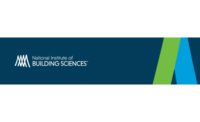Vectorworks Announces New Technologies Webinar Series

As part of its commitment to educate and empower the design community, global design and BIM software developer Vectorworks Inc. announced an ongoing “New Technologies” accredited webinar series that will explore emerging advancements in the design industry.
Following the delivery of “From Point Cloud to Documentation” earlier this year, and now available on demand, the next two installments of the webinar series include “Organic Prototyping with the Subdivision Tool” (1 AIA LU), airing Thursday June 23, 2016 and “Introduction to Energy Modeling using Energos” (Pending 1 AIA LU), which will broadcast on Thursday, July 28, 2016. Additionally, another industry-specific webinar titled, “Augmenting Landscape Architect’s Design Workflows with Information Modeling” (1 LA CES HSW PDH) will go live on Thursday, July 21, 2016. All three upcoming webinars will begin at 2 p.m. ET.
Live webinar attendees who register with their AIA or ASLA member numbers, respectively, will receive their Continuing Education credits after each webinar. Those watching on-demand following the live airing will still be able to earn credit by taking an associated quiz, which will be emailed to registrants along with the recording.
Registration links and further details follow below.
June 23, 2016: New Technologies Webinar: Organic Prototyping with the Subdivision Tool
This webinar features Jacob Dale, BIM expert and creative director at Tangably, as he guides attendees through 3D modeling using the Subdivision tool. Dale will explore the possibilities for creating organic shapes with this tool, along with sketching flowing forms that can be modeled for output to additive or subtractive fabrication processes. The learning objectives for this webinar include:
- Create an organic shape using the Subdivision tool.
- Investigate the effects and uses of all sub-modes and controls.
- Distinguish among the types of objects that can be modeled and know how to generate them from a Subdivide object.
- Prepare a basic file for physical prototyping.
Register for the “Organic Prototyping with the Subdivision Tool” webinar here.
July 21, 2016: Augmenting Landscape Architect’s Design Workflows with Information Modeling
Join Stephen Schrader, PLA, ASLA, associate landscape architect at Holcombe Norton Partners Inc., as he instructs attendees on how to apply BIM tools to the practices of landscape architecture and site information modeling through comprehensive, innovative and intelligent workflows to make appropriate decisions throughout the creative process. The learning objectives for this webinar include:
- Understand the benefits of augmenting existing design workflows with a combination of standard information modeling tools available in design technology, drawing file organization best practices, and parametric, smart objects to model site data and store information beyond the visual representation of the project.
- Recognize how to apply database, reporting and spreadsheet functions in worksheets to derive site data from the geometry and smart objects in a design file, simplifying calculation tasks and producing more accurate construction documents used for project bidding.
- See how using a plant database to store plant data can aid in preparing worksheets to calculate landscape water use reduction from a calculated baseline to meet water efficiency project goals or earn green building credits.
- Become aware of how firms use worksheet calculations to test the effects of design decisions in real time and verify compliance with green codes, zoning/landscape ordinances and LEED/SITES credits.
Sign up for “Augmenting Landscape Architect’s Design Workflows with Information Modeling” here.
July 28, 2016: New Technologies Webinar: Introduction to Energy Modeling using Energos
By participating in this webinar with François Lévy, AIA, principal at Lévy Kohlhaas Architecture, viewers will learn how to apply energy analysis tools to architectural design workflows. Using an energy analysis feature integrated into Vectorworks software called Energos, Lévy will demonstrate how to model for sustainability during the beginning phases of a BIM workflow on a small residential project. The learning objectives for this webinar include:
- Understand the appropriate role of early energy analysis in architectural design processes.
- Evaluate how thermal envelope decisions affect a building’s overall energy footprint.
- Investigate the relative impact of individual building components on building performance.
- Learn about the application and functions of an integrated energy analysis tool.
Enroll in the “Introduction to Energy Modeling using Energos” webinar here.
Catch Up With The First New Technologies Webinar
“From Point Cloud to Documentation” is now available on demand to help viewers gain more information about how Vectorworks software incorporates data captured with 3D scanning into a designer’s workflow using point cloud technology. Upon completion, viewers may earn one AIA LU by taking an associated quiz. The learning objectives for this webinar include:
- Understand how point cloud information is becoming prevalent and commonly utilized in the architecture industry.
- Discuss the differences between various point cloud formats.
- Understand how to clean and filter data for BIM optimization.
- Explain the process of using point cloud information for an architectural project.
“The inspiration behind the accredited New Technologies webinar series is to provide an easy medium for designers to stay informed about emerging advancements and trends, while also furthering their application of Vectorworks software,” said Alice Lowy, marketing director of Vectorworks. “We look forward to expanding this series and providing other industry-focused webinars like the landscape architecture webinar we have planned in July, coupled with entertainment design-focused sessions we’re developing for later this year.”
Looking for a reprint of this article?
From high-res PDFs to custom plaques, order your copy today!





